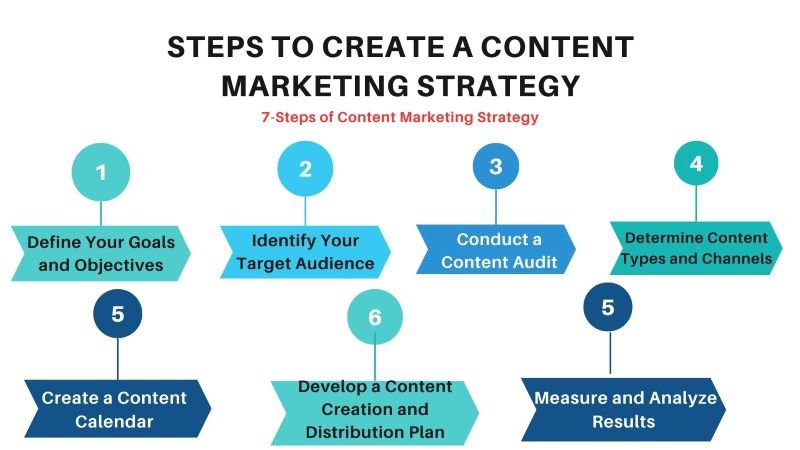The Ultimate Guide to Creating a Content Marketing Strategy
Welcome to the ultimate guide to creating a content marketing strategy! In today’s digital age, content marketing has become an essential tool for businesses to connect with their target audience and drive meaningful engagement. Whether you’re a small startup or a well-established company, having a well-thought-out content marketing strategy can make all the difference in achieving your marketing goals.
Understanding Content Marketing Strategy
Content marketing strategy is a crucial component of any successful marketing campaign. It involves creating and distributing valuable, relevant, and consistent content to attract and engage a specific target audience. A well-planned content marketing strategy helps businesses build brand awareness, establish credibility, and ultimately drive profitable customer action.
The Benefits of a Content Marketing Strategy
Implementing a content marketing strategy can yield numerous benefits for businesses. Here are some of the key advantages:
1. Increased Brand Awareness: A well-executed content marketing strategy can significantly enhance brand visibility. By consistently delivering valuable content to your target audience, you can establish your brand as a thought leader in your industry. This helps to build trust and credibility, making your brand more recognizable and memorable.
2. Improved Customer Engagement: Engaging content is essential for attracting and retaining customers. A content marketing strategy allows you to create content that resonates with your target audience, addressing their pain points and providing solutions. By delivering valuable and relevant content, you can foster meaningful connections with your customers, leading to increased engagement and loyalty.
3. Enhanced Search Engine Optimization (SEO): Quality content plays a vital role in improving your website’s search engine rankings. By incorporating relevant keywords and providing valuable information, you can optimize your content for search engines. This helps to increase organic traffic to your website and improve your overall online visibility.
4. Increased Lead Generation: A well-crafted content marketing strategy can generate valuable leads for your business. By creating content that addresses the needs and interests of your target audience, you can attract potential customers and capture their contact information. This enables you to nurture these leads and guide them through the sales funnel.
5. Cost-Effective Marketing: Compared to traditional marketing methods, content marketing is often more cost-effective. By creating and distributing valuable content, you can reach a wider audience without the need for expensive advertising campaigns. Additionally, content marketing has a longer shelf life, allowing you to continue generating value from your content over time.
Why is a Content Marketing Strategy Important?
A content marketing strategy is a roadmap that outlines your goals, target audience, content types, distribution channels, and metrics for success. It provides a clear direction for your content creation efforts and ensures that every piece of content you produce aligns with your overall business objectives.
Here are a few reasons why a content marketing strategy is important:
- Builds brand awareness: By consistently creating and sharing valuable content, you can increase your brand’s visibility and establish yourself as a thought leader in your industry.
- Drives organic traffic: High-quality content that is optimized for search engines can help improve your website’s search rankings and attract more organic traffic.
- Generates leads: Content marketing allows you to capture the attention of potential customers and nurture them through the buyer’s journey, ultimately converting them into leads.
- Builds trust and credibility: Providing valuable and informative content helps build trust with your audience and positions your brand as an authority in your niche.
- Increases customer engagement: Engaging content that resonates with your target audience can encourage them to interact with your brand, share your content, and become loyal customers.
Also reads: Top 10 IT Companies in India in 2024 by Market Capitalisation
Steps to Create a Content Marketing Strategy
Now that you understand the importance of a content marketing strategy, let’s dive into the steps to create one:

1. Define Your Goals and Objectives
The first step in creating a content marketing strategy is to clearly define your goals and objectives. What do you hope to achieve through your content marketing efforts? Are you looking to increase brand awareness, generate leads, drive website traffic, or all of the above?
Make sure your goals are specific, measurable, attainable, relevant, and time-bound (SMART). This will help you stay focused and track the success of your content marketing strategy.
2. Identify Your Target Audience
Understanding your target audience is crucial for creating content that resonates with them. Take the time to research and identify your ideal customer persona. What are their demographics, interests, pain points, and challenges?
Once you have a clear understanding of your target audience, you can tailor your content to address their needs and provide value.
3. Conduct a Content Audit
Before creating new content, it’s important to assess your existing content assets. Conduct a thorough content audit to identify gaps, overlaps, and areas for improvement.
Look at the performance metrics of your existing content, such as page views, engagement, and conversions. This will help you determine what types of content are resonating with your audience and what can be optimized.
4. Determine Content Types and Channels
Based on your goals, target audience, and content audit, determine the types of content that will best resonate with your audience. This could include blog posts, videos, infographics, podcasts, case studies, or social media posts.
Next, identify the channels through which you will distribute your content. This could be your website, blog, social media platforms, email newsletters, or industry publications.
5. Create a Content Calendar
A content calendar is a schedule that outlines when and what content will be created and published. It helps you stay organized and ensures a consistent flow of content.
Map out your content calendar based on your goals, target audience, and content types. Consider seasonal trends, industry events, and relevant topics that align with your brand.
6. Develop a Content Creation and Distribution Plan
With your content calendar in place, it’s time to start creating and distributing your content. Develop a plan for content creation, including who will be responsible for creating, editing, and approving content.
When it comes to distribution, consider leveraging social media platforms, email marketing, SEO optimization, influencer collaborations, and paid advertising to amplify the reach of your content.
7. Measure and Analyze Results
Regularly measure and analyze the performance of your content marketing efforts. Use analytics tools to track metrics such as website traffic, engagement, conversions, and social media reach.
Based on the insights gathered, make data-driven decisions to optimize your content strategy and improve results over time.
Developing a Content Marketing Strategy
Developing an effective content marketing strategy requires careful planning and consideration. Here are some key steps to help you get started:
1. Define Your Goals
Start by clearly defining your goals and objectives. What do you hope to achieve with your content marketing strategy? Whether it’s increasing brand awareness, driving website traffic, or generating leads, having clear goals will guide your content creation and distribution efforts.
2. Identify Your Target Audience
Understanding your target audience is crucial for creating content that resonates with them. Conduct market research to identify their demographics, interests, pain points, and preferences. This will help you tailor your content to their specific needs and interests.
3. Create Valuable Content
Focus on creating valuable and relevant content that addresses the needs and interests of your target audience. This can include blog posts, articles, videos, infographics, and more. Your content should provide solutions, answer questions, and offer insights that your audience finds valuable.
4. Choose the Right Channels
Identify the most effective channels for distributing your content. This could include your website, blog, social media platforms, email newsletters, and industry publications. Choose channels that align with your target audience’s preferences and habits.
5. Develop a Content Calendar
Create a content calendar to plan and organize your content creation and distribution schedule. This will help you stay consistent and ensure that you are delivering content regularly. Your content calendar should include topics, keywords, deadlines, and distribution channels.
6. Measure and Analyze
Regularly monitor and analyze the performance of your content marketing efforts. Use analytics tools to track metrics such as website traffic, engagement, and conversions. This will help you identify what’s working and what can be improved, allowing you to refine your content strategy over time.
Conclusion
Creating a content marketing strategy is essential for businesses looking to effectively engage with their target audience and achieve their marketing goals. By following the steps outlined in this guide, you can develop a comprehensive content marketing strategy that drives results and helps your brand stand out in the crowded digital landscape.
Remember, consistency, relevance, and value are key when it comes to content marketing. Keep your audience at the forefront of your strategy, and you’ll be well on your way to building a successful content marketing strategy.
